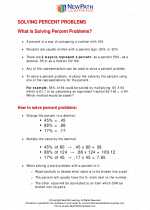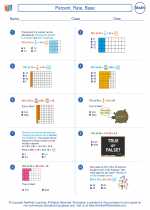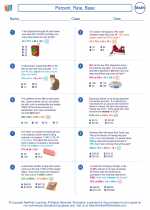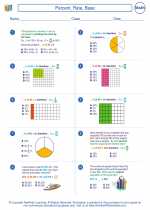Percent, Rate, Base -> percentages
Percentages Study Guide
What is a Percentage?
A percentage is a way of expressing a number as a fraction of 100. It is denoted by the symbol "%". For example, 50% is the same as 50 out of 100, or 0.50 as a decimal.
Converting Between Percentages and Decimals
To convert a percentage to a decimal, divide the percentage by 100. For example, to convert 75% to a decimal, divide 75 by 100: 75 ÷ 100 = 0.75.
To convert a decimal to a percentage, multiply the decimal by 100. For example, to convert 0.60 to a percentage, multiply 0.60 by 100: 0.60 × 100 = 60%.
Calculating Percentages
To calculate a percentage of a number, you can use the formula:
Percentage = (Part/Whole) × 100
For example, if you want to find 20% of 150, you would use the formula: (20/100) × 150 = 0.20 × 150 = 30.
Percentage Change
To calculate the percentage change between two numbers, you can use the formula:
Percentage Change = ((New Value - Old Value) / Old Value) × 100
For example, if the price of a product increased from $50 to $60, the percentage change would be: (($60 - $50) / $50) × 100 = (10 / 50) × 100 = 20% increase.
Applications of Percentages
Percentages are used in many real-life situations, such as calculating discounts, finding interest rates, and analyzing data in statistics.
.◂Math Worksheets and Study Guides Sixth Grade. Percent, Rate, Base

 Worksheet/Answer key
Worksheet/Answer key
 Worksheet/Answer key
Worksheet/Answer key
 Worksheet/Answer key
Worksheet/Answer key
